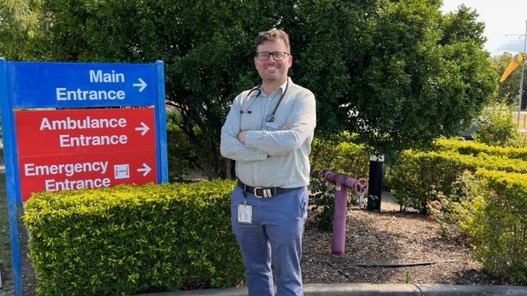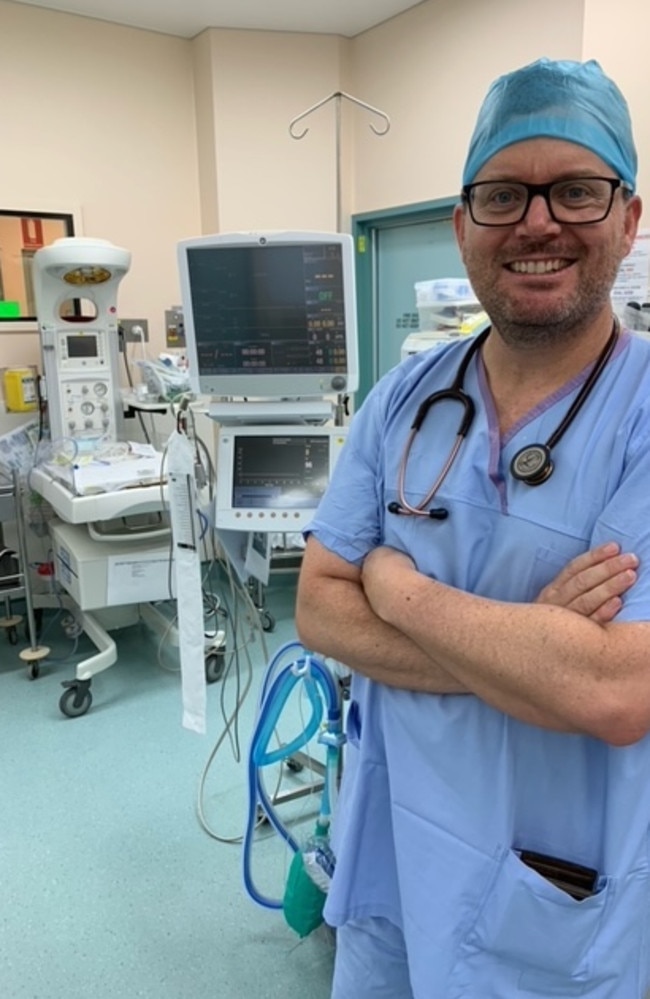Beaudesert doctor reveals sick state of rural hospital staffing
A rural hospital in southeast Queensland, which stands to rival Gladstone for having the state’s worst-staffed medical facility, is one of 20 to have missed out on vital allocations of junior interns.

Local
Don't miss out on the headlines from Local. Followed categories will be added to My News.
A rural hospital in southeast Queensland stands to rival Gladstone for having the state’s worst staffed medical facility after missing out on a statewide allocation of junior intern doctors this week.
Beaudesert Hospital, 45 minutes’ drive south of Brisbane, is the latest Queensland hospital buckling under the state’s recorded 15 per cent rural generalist doctor vacancy rate, according to staff whistleblowers.
Angry staff revealed the facility often had no registered “rural generalist” doctor on site with the most recent instance on the weekend of January 7-8.
The hospital survives with one full-time and 16 part-time rural generalist doctors, who specialise in a range of rural medical procedures including anaesthetics, emergency cases and maternity procedures.
This month, Queensland Health employed an extra 148 junior doctors after director-general Shaun Drummond revealed the 15 per cent doctor vacancy rate in the state’s rural and remote regions compared to the 1.5 per cent vacancy rate in metropolitan hospitals.
However, Beaudesert was one of at least 20 rural hospitals to miss out on the intern doctor allocations.
The Gold Coast received 92 new doctors, Logan Hospital got 39, Princess Alexandra Hospital 89, Redland Hospital 5 and QEII Jubilee Hospital 15.
The new junior doctors will undergo basic training in emergency, anaesthetic, and surgery skills.
In an effort to bolster numbers at Beaudesert, Queensland Health last week appointed the hospital’s only full-time senior doctor as a permanent Director of Clinical Services along with two new principal house officers, who are not senior doctors.
“Rural generalists, also known as senior medical officers with specialist skills, currently provide 24h-hour coverage at Beaudesert Hospital,” a health spokesman said.
“These medical officers work a range of rostered hours. However, after hours there are three doctors available to respond to the hospital with skills in emergency medicine, obstetrics and anaesthetics.
“This ensures the hospital is well placed to respond to patients requiring care and treatment and the rosters for medical officers at Beaudesert Hospital align with industrial requirements.”
But Beaudesert Hospital doctor Wayne Shipley said employing more doctors and interns in cities was not helping the rural hospital doctor shortage.

Dr Shipley, who won a court challenge against the state health department over wages in 2019, said the lack of senior staff meant rural generalist doctors at the Beaudesert facility were often forced to work 16 hours in a row.
He said rural generalist doctors received less financial incentives or compensation for undertaking the extra qualifications required to work rurally with added on-call workload.
Dr Shipley, told how nurses recently tended to a potentially life threatening emergency at Beaudesert while the doctor on duty was busy performing an emergency Caesarian.
“The hospital is often left without an onsite doctor at night and when the doctor is onsite, they can’t be in the emergency department and deliver a baby at the same time,” he said.
“Rural doctors have to have specialised skills in emergency, anaesthetics, and maternity, and have the right to be paid the same as city doctors carrying out these duties.
“The rural shortage is not because there are no qualified doctors – it’s because it’s easier, better pay and better hours for doctors and their families to stay in the city or be a locum.
“The hours and on-call required for full-time rural generalist practitioners at the Beaudesert hospital are so formidable and toxic that administrators recently withdrew an advertised full-time position, telling a doctor applying that the job’s hours and responsibilities were so adverse the post was unhealthy working full time.”
Queensland Health disputed Dr Shipley’s claims that rural generalist doctors were excluded from collecting the same entitlements and benefits as their city counterparts.
Rural generalist doctors, including those at Beaudesert, must complete at least an additional year of study to qualify to be able to perform a range of specialist medicine including maternity procedures, emergency surgery and anaesthetics.
Queensland Health also denied Beaudesert Hospital was left without adequate doctor coverage and said rural generalists were adequately remunerated and faced substantial differences in overall scope of practice compared with doctors in the city.

But Dr Shipley said employing more doctors was not the only way to plug the rural doctor shortage gap and Queensland Health needed to offer work and lifestyle incentives and ensure equity in pay and conditions to entice city specialist doctors into rural and remote areas.
Under Queensland Health award agreements, rural generalists with advanced practice credentials are eligible for higher pay and all Queensland Health medical officers receive an Attraction and Retention Allowance.
However, Dr Shipley said not all rural hospitals were eligible for the regional and remote allowance with doctors at Beaudesert, Boonah and Gatton hospitals denied the money along with those at more than four other hospitals.
He said the inaccessibility allowance had not be indexed with inflation for two decades and QLD health had no plans to index the allowance with inflation.
Queensland Health said remuneration arrangements and allowances for medical staff varied for a range of reasons including location with the industrial award for General Practitioners and Rural Generalists taking into account advanced practice credentials and the level of rural or remote location.
Rural doctors are also eligible for an additional Regional and Rural Attraction Allowance of 5 to 15 per cent, depending on a “remoteness classification”.
An inaccessibility allowance of up to $48,300 a year is also available depending on the hospital location.
However, data obtained from Together Union showed, on average, a rural generalist doctor’s base rate wage was about 15 per cent less an hour than a metro doctor’s wages but they were required to undertake more on-call shifts a month.
Queensland Health’s Regional and Rural Attraction Allowance equates to 5 per cent of the base salary for senior medical officers in Cairns and Townsville (excluding Palm Island) and at the Darling Downs Hospital.
The allowance equates to 10 per cent of the base salary for senior medical officers employed on Palm Island, or in Central West, Mackay, Central Queensland, Wide Bay, and South West Hospital and Health Services.
Queensland Health said it amounted to about 15 per cent of the base salary for a senior medical officer employed in Torres and Cape and North West Hospital and Health Services.
Beaudesert Hospital, which last year dealt with 300 births and 15,000 emergency department presentations, won the Outstanding Organisation category at the 2022 Hesta Australian Nursing and Midwifery Awards.





